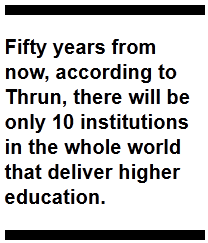 Critical thinking is thinking that questions, if you believe wikipedia. This sounds like questioning assumptions, which seems like part of critical thinking. Not what did someone just say, but more why did they say it and why do I believe them (or not). I’d also add that I roll up problem solving into critical thinking. I am presented with a problem and I must determine a solution from information (from my head, provided in the problem, or out in the world I must get). After I find a solution I need to reflect if it makes sense. I feel like critical thinking is a skill I want my students to have and I’m pretty sure every college mission statement includes it. I also have had the experience it seems difficult to teach. I come up with more advanced problems that require multiple concepts, more open ended questions that don’t have an obvious answer, or ask them to think about why we are working on a particular topic. When I do students usually run the other direction (e.g. equations & calculators, ask for the answer, etc).
Critical thinking is thinking that questions, if you believe wikipedia. This sounds like questioning assumptions, which seems like part of critical thinking. Not what did someone just say, but more why did they say it and why do I believe them (or not). I’d also add that I roll up problem solving into critical thinking. I am presented with a problem and I must determine a solution from information (from my head, provided in the problem, or out in the world I must get). After I find a solution I need to reflect if it makes sense. I feel like critical thinking is a skill I want my students to have and I’m pretty sure every college mission statement includes it. I also have had the experience it seems difficult to teach. I come up with more advanced problems that require multiple concepts, more open ended questions that don’t have an obvious answer, or ask them to think about why we are working on a particular topic. When I do students usually run the other direction (e.g. equations & calculators, ask for the answer, etc).
A good friend of mine at the Center for Excellence in Teaching and Learning at the University of Rochester is working with undergraduate students helping them teach organic chemistry. Here was a comment one of the workshop leaders made.
“I think the problem with getting students to think critically in Organic Chemistry isn’t solely an issue of them not being interested in the material. I think there’s a much larger, underlying problem… I think that often times, when taking a science class, there is often a feeling of “why are these questions being asked?” There’s a feeling of apprehension in trying to think critically, or in other words, creatively, about a subject that we already perceive as “solved.” The lack of critical thinking, it seems to me, is due to the fact that students perceive the science that they’re being taught as being “right” and that there is no reason for them to give it more than the cursory attention necessary to learn that which is already known. They have no motivation to think critically because there’s really no problem to solve; all that these questions are asking them is do they remember how someone else solved this problem.”
 I’m not sure students are thinking this deeply about why they aren’t motivated and engaged, but even if this isn’t the conscious (or even subconscious) reason, trying to attack this problem might yield dividends. I certainly would have put “not interested in subject” or “has no reason to care” as the top reason students don’t engage in critical thinking. But maybe it is “not interested in already solved problems”. If they know there is already an answer out there, why fight through it? Why work through the problem, when the answer is usually so available (its in the professors head who is standing right beside me).
I’m not sure students are thinking this deeply about why they aren’t motivated and engaged, but even if this isn’t the conscious (or even subconscious) reason, trying to attack this problem might yield dividends. I certainly would have put “not interested in subject” or “has no reason to care” as the top reason students don’t engage in critical thinking. But maybe it is “not interested in already solved problems”. If they know there is already an answer out there, why fight through it? Why work through the problem, when the answer is usually so available (its in the professors head who is standing right beside me).
My first response is that when they leave campus, their job will likely be mostly problems that are not solved or the answers are not easily obtained. Jobs that only rely on information that can be looked up or operations that are so mundane they don’t require critical thinking are likely to be replaced by robots and computers or shipped off to a country with a lower wage. There is a strong likelihood they will be working a job that requires new/more information that were taught in college. Basically, critical thinking is the MOST important skill they can get.
So now I start questing if I’m doing my job well. They need background (information, definitions, context), skills (algorithms, procedures), and concepts (big ideas, why this matters) before they have a good chance of being good critical thinkers, but am I moving them in that direction fast enough? Is the department’s curriculum getting them there before they graduate?
UPDATE (1/4/2013) – Great article about how to teach critical thinking and its attributes.

 I’m not sure how it happened, but I ended up having two Washington Post articles up on my screen at the same time: “
I’m not sure how it happened, but I ended up having two Washington Post articles up on my screen at the same time: “





